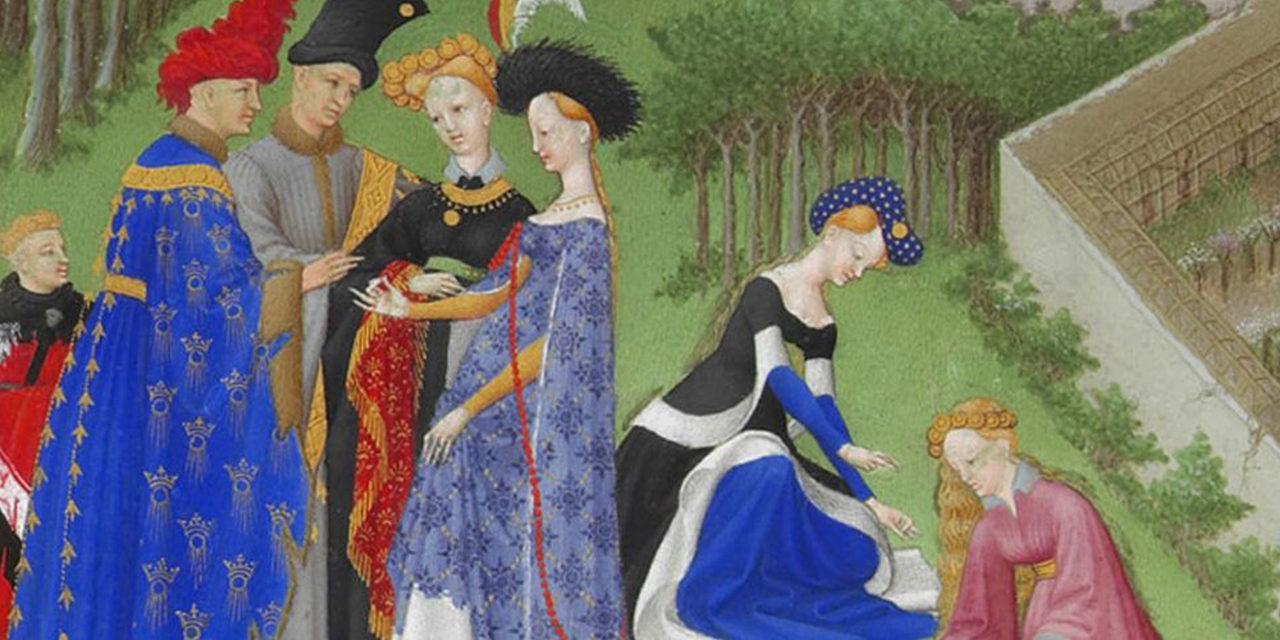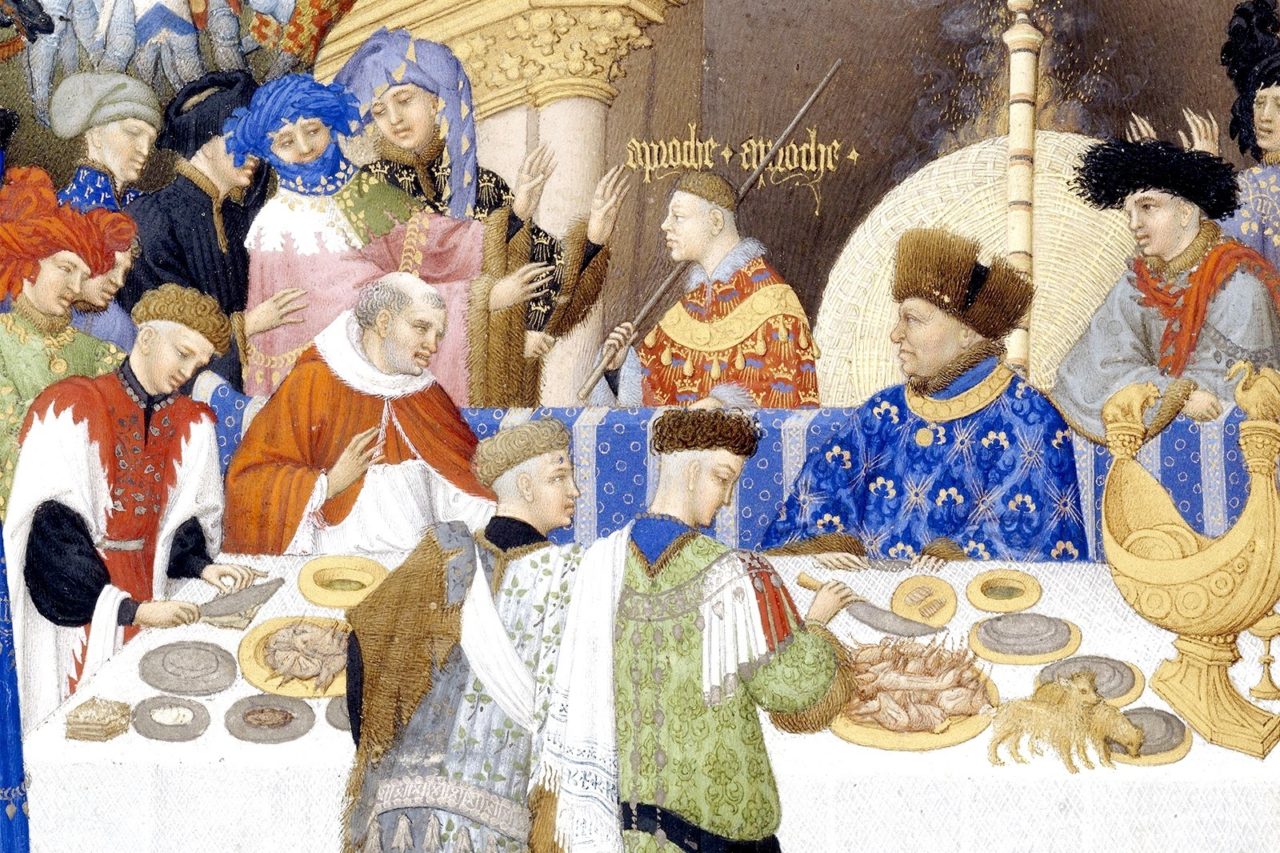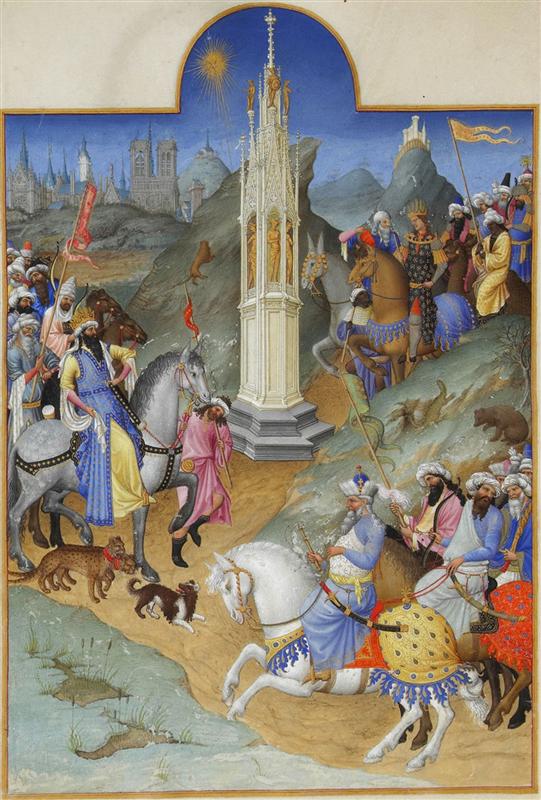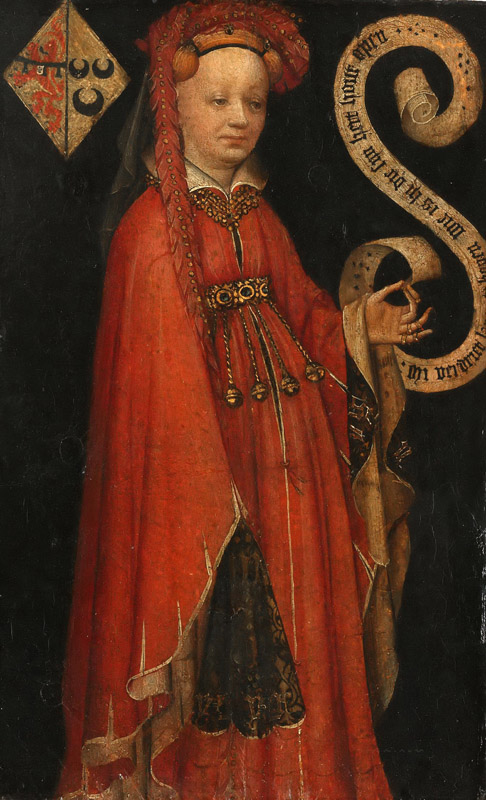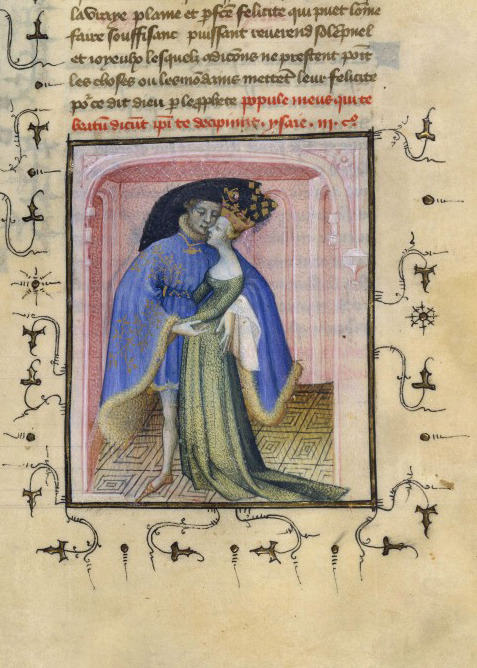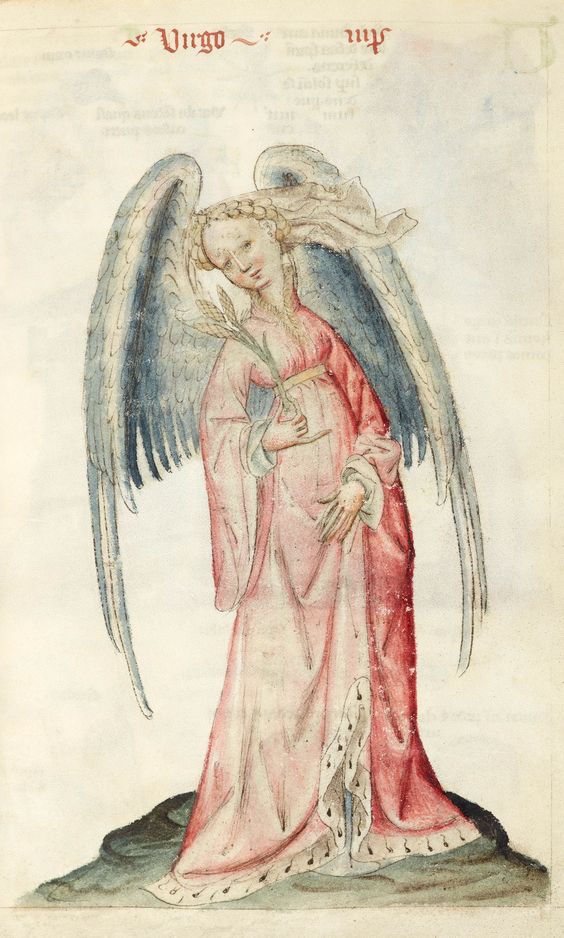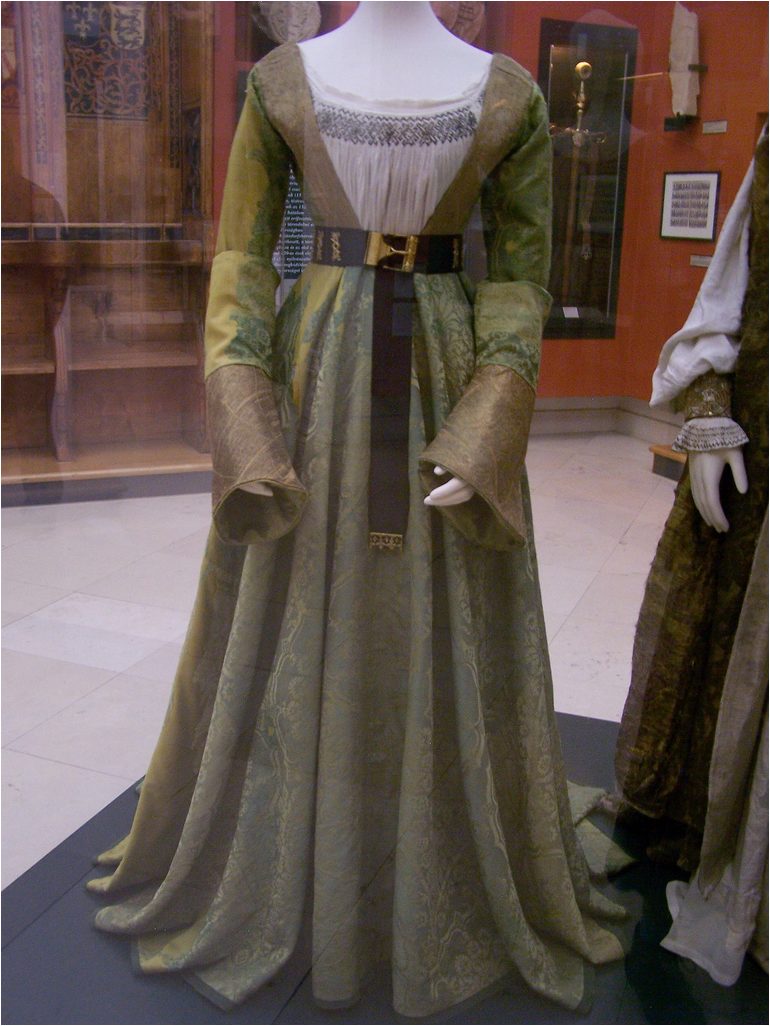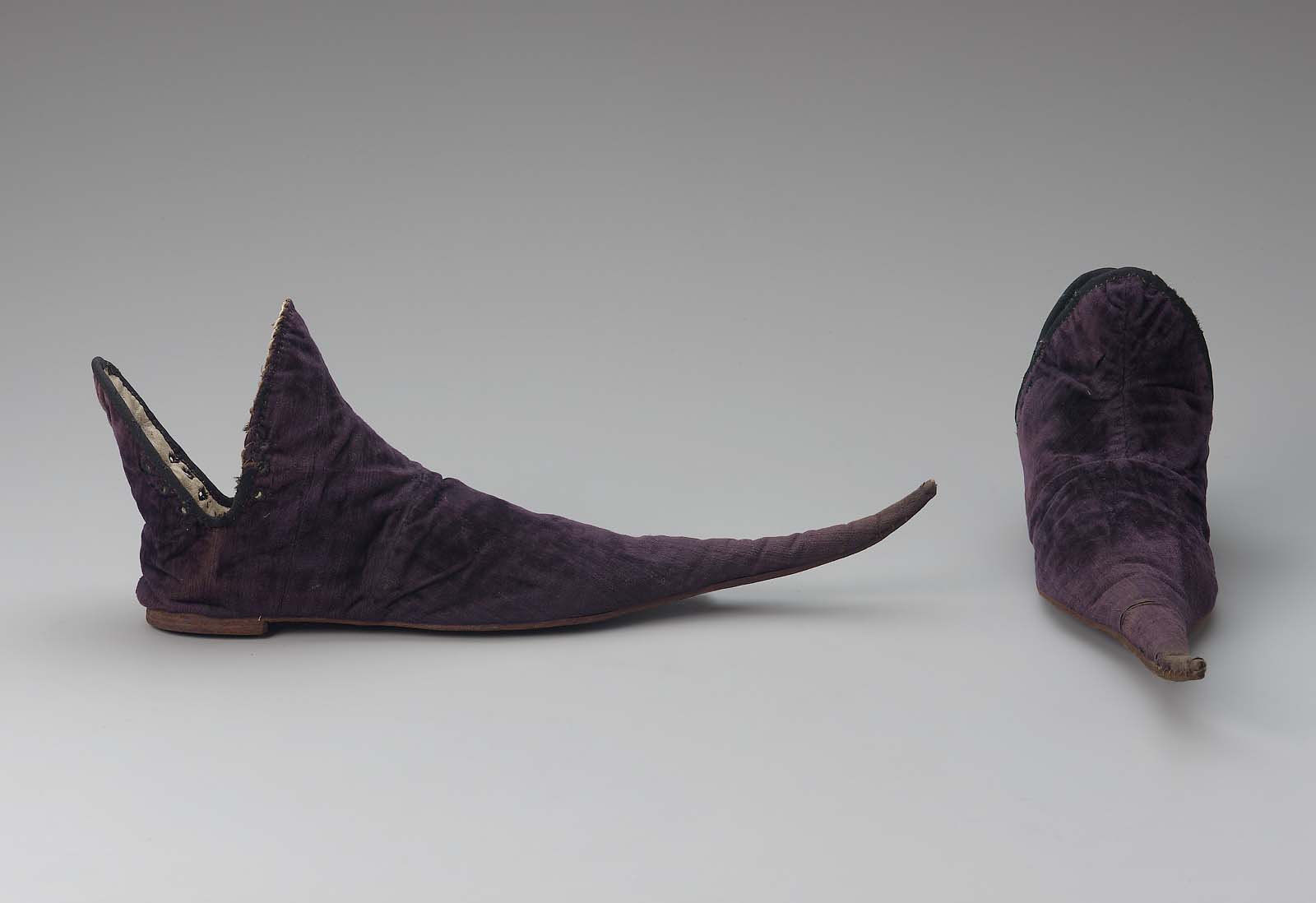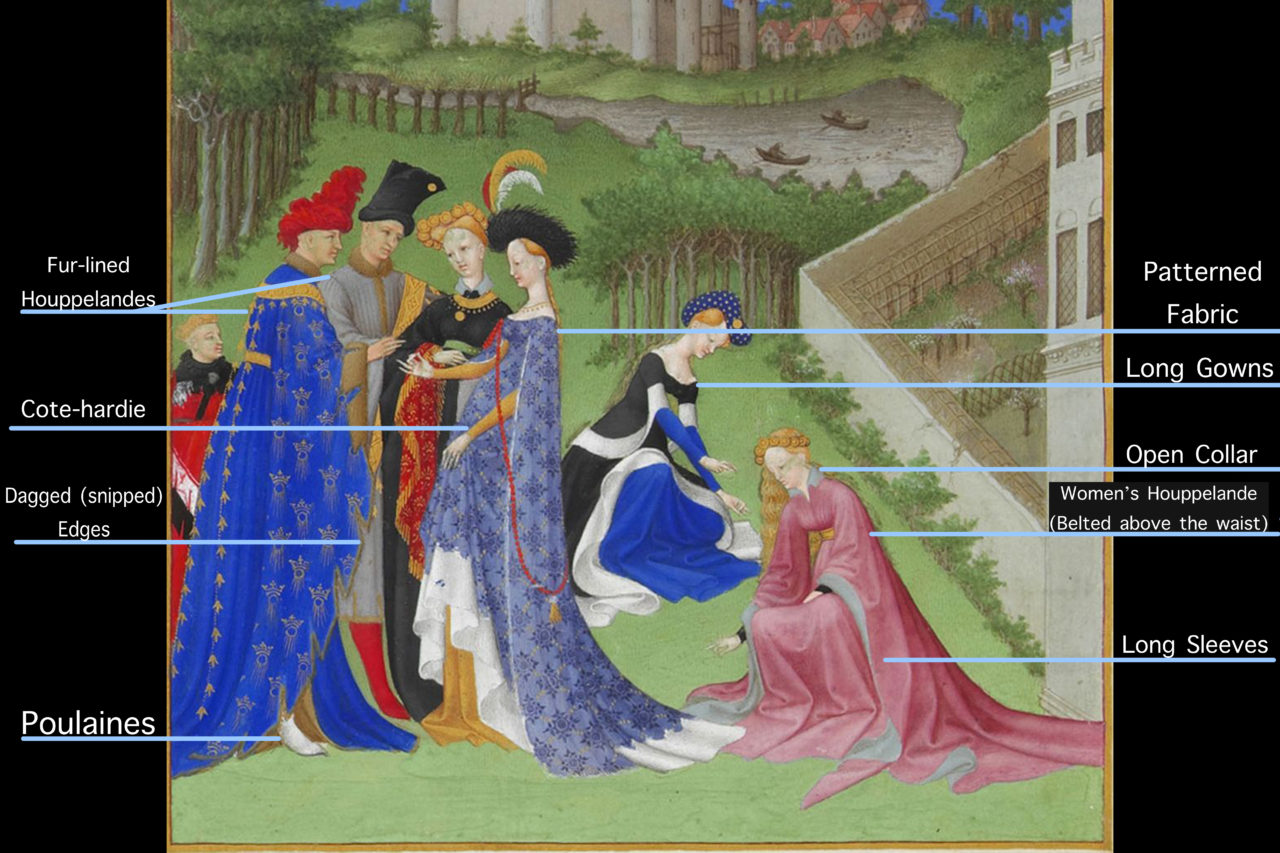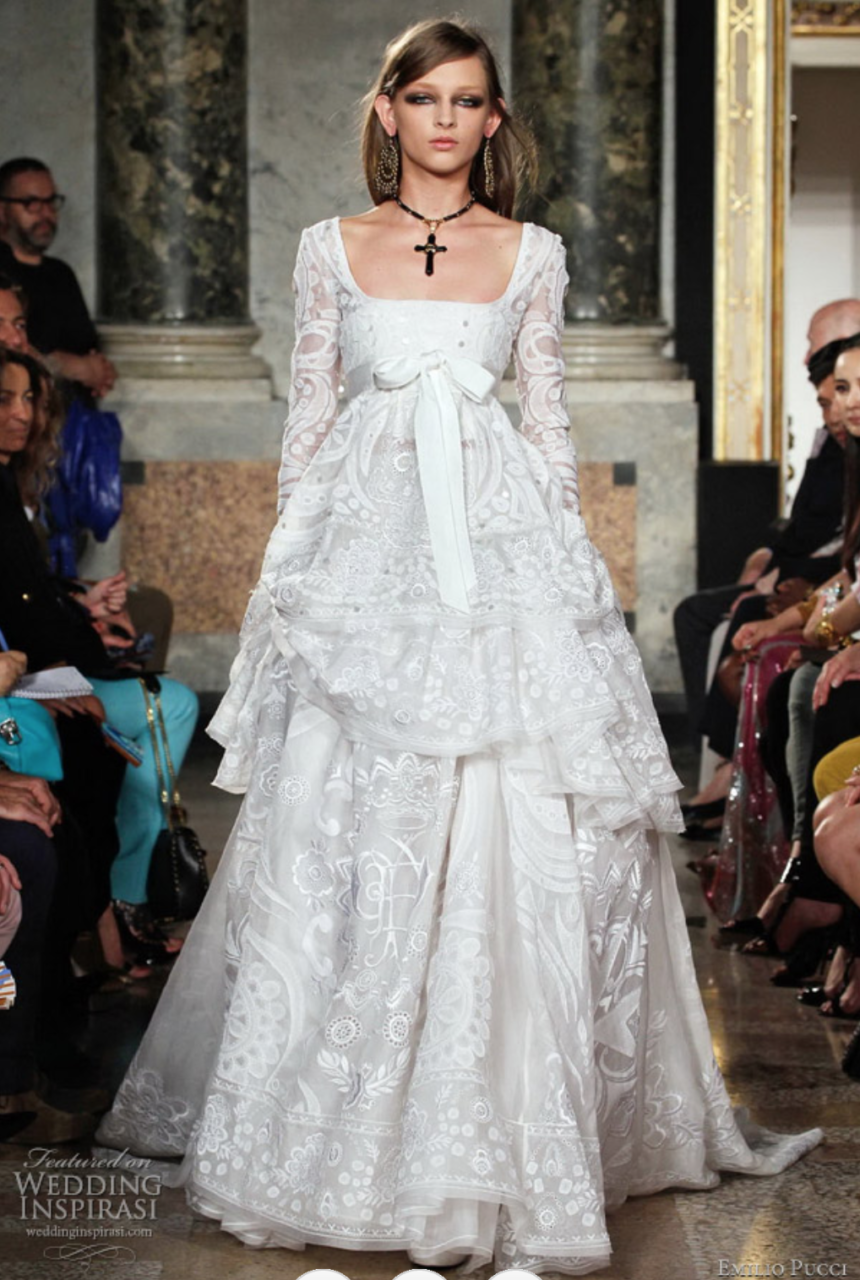April, illuminated by the Limbourg Brothers, shows us the high fashion of wealthy nobles in the Late Middle Ages.
About the Artwork
Pol, Jean, and Herman Limbourg were the artistic team of brothers who created the most famous illuminated manuscript, the Très Riches Heures du Duc de Berry. Of Northern Netherlandish decent, the brothers worked in France, creating many Late High Gothic works (Manion, Limbourg). Another good example of their Gothic style is The Meeting of the Magi (Fig. 2). Despite the fact that three brothers each worked on these manuscripts, as art historian Margaret Manion notes, “most art historians agree that it is impossible to distinguish adequately the artistic personality and style of each of the three brothers and that their oeuvre is more appropriately treated as a single entity” (Limbourg). Somewhere during 1411 or 1413 the brothers began their work on Très Riches Heures du Duc de Berry, as per commission of the Duke. Unfortunately, by the year 1416, all three brothers passed away, presumably from the plague, leaving the Très Riches Heures du Duc de Berry unfinished (Manion, Limbourg).
While no one is certain about the identities of the people in this painting, many believe that the man wearing the blue and gold fur-lined houppelande is the Duke himself. It is believed that the illustrated month of April is a depiction of him being wed to his second wife, Jeanne de Boulogne, who was only 12 years old at the time (Simon). In figure 1, you can see another depiction of the Duke in the same blue and gold houppelande, also painted by the Limbourg Brothers.
During 1416, not only did the brothers die, but the Duke passed away as well, leaving the manuscript to fall into different hands, eventually being finished by Jean Colombe (Manion, Très Riches Heures). However, the illustrations in the manuscript greatly impacted future art, and still remain a wonderful example of the art of its period.
Fig. 1 - Limbourg Brothers (Dutch, 1385–1416). January, 1413-1416. Ink on vellum; (8 7/8 x 5 3/8 in). Chantilly: Musée Condé. Source: Future Learn
Fig. 2 - Limbourg Brothers (Dutch, 1385–1416). The Meeting of the Magi, 1412. Chantilly: Musée Condé. Source: WikiArt
Limbourg Brothers (Dutch, 1385 – 1416). April, 1412-1416. Illumination on vellum; 29 × 21 cm (11 2/5 × 8 3/10 in). Chantilly: Musée Condé. Source: Wikipedia
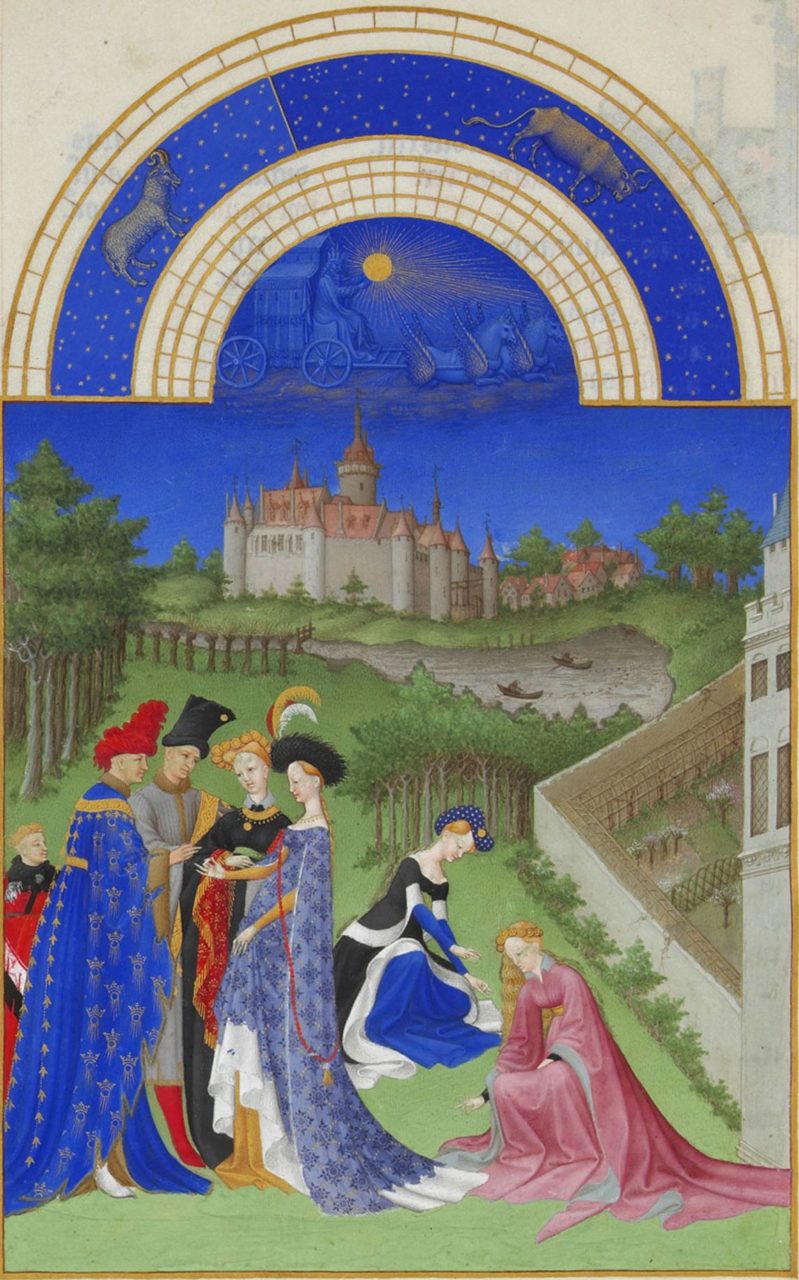
About the Fashion
As there are many figures in April, there are many examples of fashionable garb that can be discussed. The young couple depicted in the front are of high wealth and status, most easily noted by their brocaded fabrics. The young woman is seen in a long blue gown with a very rounded neckline over a gold cote-hardie, which is likely made of silk. The long flowing sleeves and layers of fabric was very fashionable in the late middle ages (Hennessy 74-75). The men are wearing fur-lined houppelandes with long sleeves. As fashion historian Denis Delis Hill explains, a houppelande was an outer tunic that was fitted around the shoulders and flared out underneath, usually pulled in at the waist with a belt (331). These began as a male-specific garment, but after 1387, women began to wear a softer version of the houppelande (Tortora 133). The man offering the ring can be seen with dagged (snipped) edges on his sleeves, a trend picked up from German fashion (Hennessy 72). The woman on the right is seen in a high, open-collared houppelande, belted very high on the waist to achieve a maternal figure (Tortora 139).
As for the accessories, one can see the gentlemen are wearing poulaines and hose, much like the ones seen in figure 9. The exaggerated pointed toe of the poulaine was its signature; according to Tortora, the more pointed the toe the more wealthy the man (132). During the Late Middle Ages, many different styles of hats were in fashion. The fiancée can be seen wearing a fur and feather hat, while the men are depicted in different types of head wraps and hats. The women can also be seen wearing various types of gold jewelry. Paris and Helen, seen in figure 4, are also wearing houppelandes, gowns, and an interesting head wrap and hennin-style hat.
While the Crusades brought with it some new technological advances in clothing production, such as the spinning wheel and the horizontal loom, elaborately brocaded clothing and gowns made with ample fabric were a luxury of the upper class (Monet). These houppelandes and gowns were tailor-made for these wealthy individuals.
Fig. 3 - Artist unknown. Portrait of Lysbeth van Duvenvoorde, ca. 1430. Oil on parchment; 32 x 20 cm. Amsterdam: Rijks Museum. On loan from the Koninklijk Kabinet van Schilderijen Mauritshuis. Source: FineArt China
Fig. 4 - Artist unknown. Paris and Helen, from a copy of Christine de Pizan’s L'Epistre de Othea a Hector, ca. 1406. Source: Pinterest
Fig. 6 - Abu Ma'shar. Astrological Treatises, in Latin, ca. 1402. Manuscript illumination; 25.4 x 17.5 cm. New York: The Morgan Library and Museum, MS M.785, fols. 15v–16r. Source: Pinterest
While the image depicts a couple being wed, these outfits would also be worn on other occasions for people of such high status. By the Late Middle Ages, fashion was no longer about comfort, and more importantly for the wealthy, it was a sign of status (Monet). However, we can see our bride is wearing blue, which was a sign of purity and often worn during a wedding ceremony (Knight).
According to Cichon-Hollander, after the Bubonic Plague, the ideal body type of women shifted to one that showed signs of fertility and life, aka. a large, full belly (Cichon-Hollander). This look was achieved by cinching under the breasts with belts or upper-fitted gowns. Flowing fabric beneath the waist put an emphasis on the larger stomach. All of the women shown in April are wearing such attire, with very protruding stomachs. A very similar look can be seen in Portrait of Lysbeth Van Duvenvoorde (Fig. 3) and Abu Ma’shar (Fig. 6), with both women having a rounded belly and a belt placed very high on their waists. This body ideal can also be seen in The Arnolfini Portrait by Jan Van Eyck, where the woman is clearly meant to have an ideal, large-bellied figure (Fig. 7). A similar surviving garment can be seen at the Hungarian National Museum in Budapest. On display is the gown of Mary of Hapsburg, in which it is belted very high up on the waist, leaving a plethora of flowing fabric below (Fig. 8).
The individuals in April are all of very high status and very in fashion for the time. They all are a prime example of the ideal body type and dress of the Late Middle Ages. The costumes let us know that these are very wealthy, fashionable individuals, definitely not commoners or conservative, old-fashioned individuals.
Fig. 7 - Jan van Eyck (Netherlandish, 1390-1441). The Arnolfini Portrait, 1434. Oil on oak panel; 82.2 x 60 cm. London: National Gallery. Source: History of Costume
Fig. 8 - Maker unknown. Mary of Hapsburg's Gown, ca. 1475-1500. Budapest: Hungarian National Museum. Donated in 1522 by Mary's Granddaughter. Source: Flickr
Fig. 9 - Maker unknown. Pair of poulaine (or crakow ) shoes, 15th century. Silk and leather; 16.5 x 10.6 x 45 cm (6 1/2 x 4 3/16 x 17 11/16 in). Boston: Museum of Fine Arts, 44.572a-b. The Elizabeth Day McCormick Collection. Source: MFA Boston
Its Legacy
Très Riches Heures du Duc de Berry has been considered the epitome of High Gothic art and style, going on to influence many artworks that followed (Manion, Très Riches Heures). It is still to this day considered a one of the most beautiful manuscripts ever produced. While the pregnant look is no longer ideal, and men don’t typically wear floor-length tunics, the effects of this fashion trend can still be seen today. In Emilio Pucci’s 2012 Spring collection, a white empire waist gown looks very matronly and reminiscent of the Late Middle Ages (Fig. 9). Our modern graduation gowns also resemble the houppelandes of nobility back in the Late Middle Ages (Fig. 10). It’s easy to look around and see the effects of early fashion, no matter how far back it goes.
Fig. 9 - Emilio Pucci. Empire Waist Ball Gown, Spring 2012. Source: Wedding Inspirasi
Fig. 10 - GradShop. Deluxe Doctoral Academic Gown. Source: GradShop
References:
- Brown, Susan, ed. Fashion: The Definitive History of Costume and Style. New York: DK Publishing, 2012. http://www.worldcat.org/oclc/915140562.
- “Fashion History of the High and Late Middle Ages – Medieval Clothing.” Bellatory. Accessed December 1, 2017. https://bellatory.com/fashion-industry/FashionHistoryoftheHIghandLateMiddleAgesClothingo-the11th-15thCentury.
- Hill, Daniel Delis. History of World Costume and Fashion. Upper Saddle River, NJ: Pearson Prentice Hall, 2011. http://www.worldcat.org/oclc/731445106.
- “History Undressed: History of Weddings: From the Middle Ages to the Present.” Accessed December 1, 2017. http://www.historyundressed.com/2008/06/history-of-weddings-from-middle-ages-to.html.
-
Knight, Eliza. “History of Weddings: From the Middle Ages to the Present.” History Undressed (blog). Accessed December 1, 2017. http://www.historyundressed.com/2008/06/history-of-weddings-from-middle-ages-to.html.
- Lavery, Simon. “April and May in the Très Riches Heures.” Tredynas Days (blog), April 30, 2016. http://tredynasdays.co.uk/2016/04/april-may-tres-riches-heures/.
- Manion, Margaret M. “Limbourg, De.” Grove Art Online, n.d. http://www.oxfordartonline.com/subscriber/article/grove/art/T051105.
- ———. “Très Riches Heures.” Grove Art Online, n.d. http://www.oxfordartonline.com/subscriber/article/grove/art/T086110.
- “The European Ideal Beauty of the Human Body in Art – The Art History Archive.” Accessed December 1, 2017. http://www.arthistoryarchive.com/arthistory/european/European-Ideal-Beauty-of-the-Human-Body-in-Art.html.
- Tortora, Phyllis G., and Keith Eubank. Survey of Historic Costume: A History of Western Dress. 3rd ed. New York: Fairchild Publications, 1998. http://www.worldcat.org/oclc/926775418.
- “Les Collections du musée Condé.” Accessed December 1, 2017. http://www.musee-conde.fr/.

